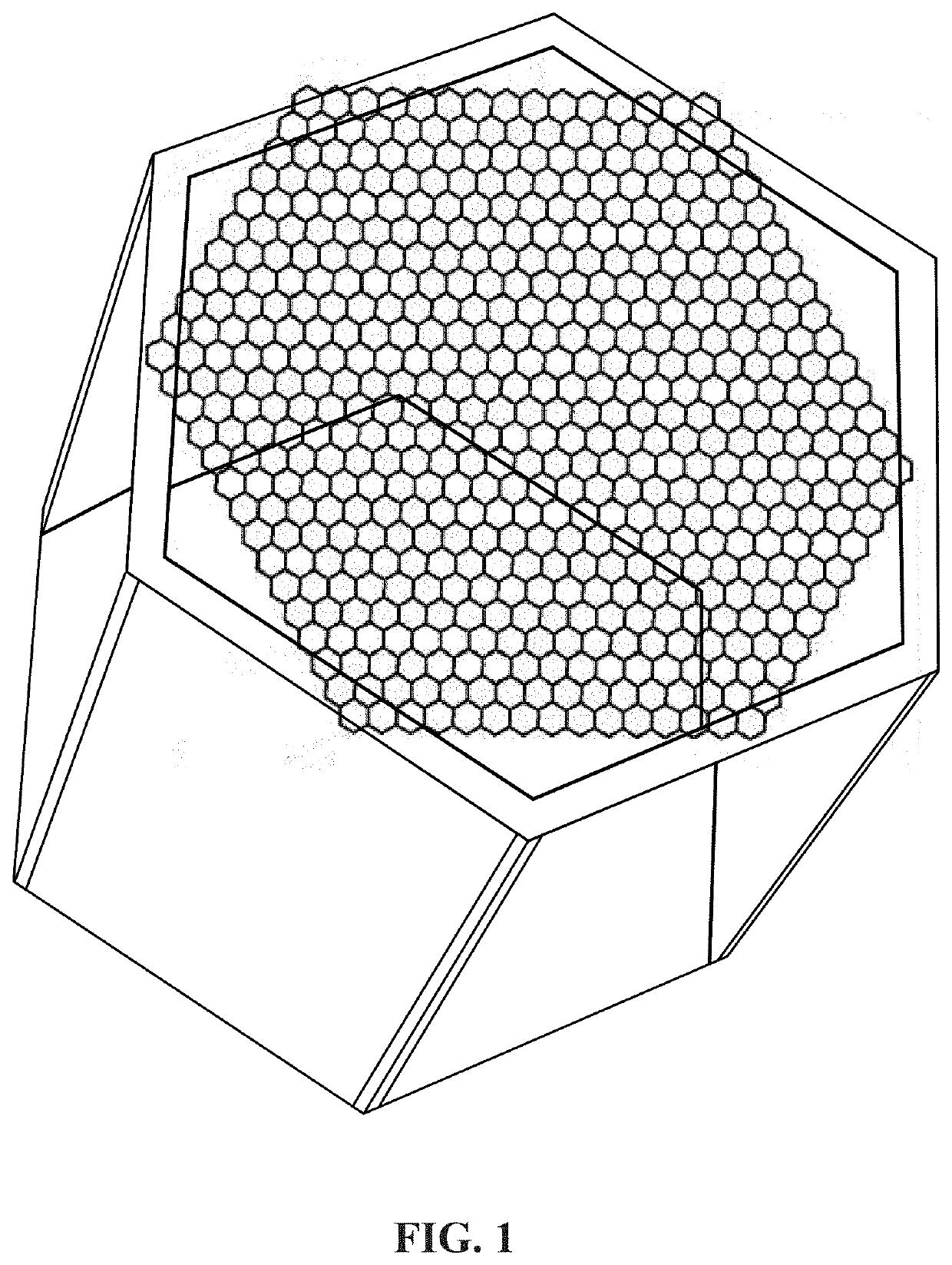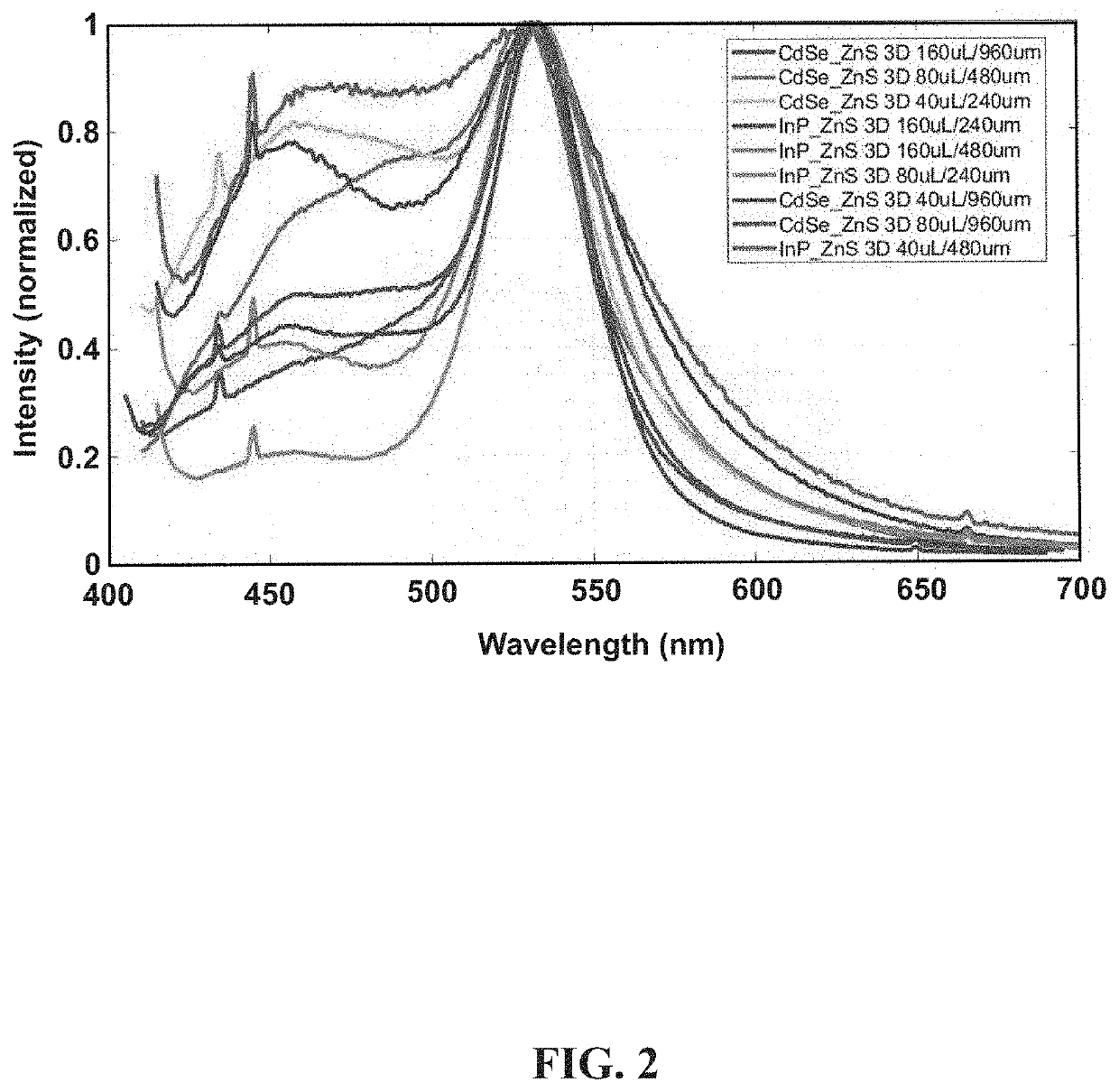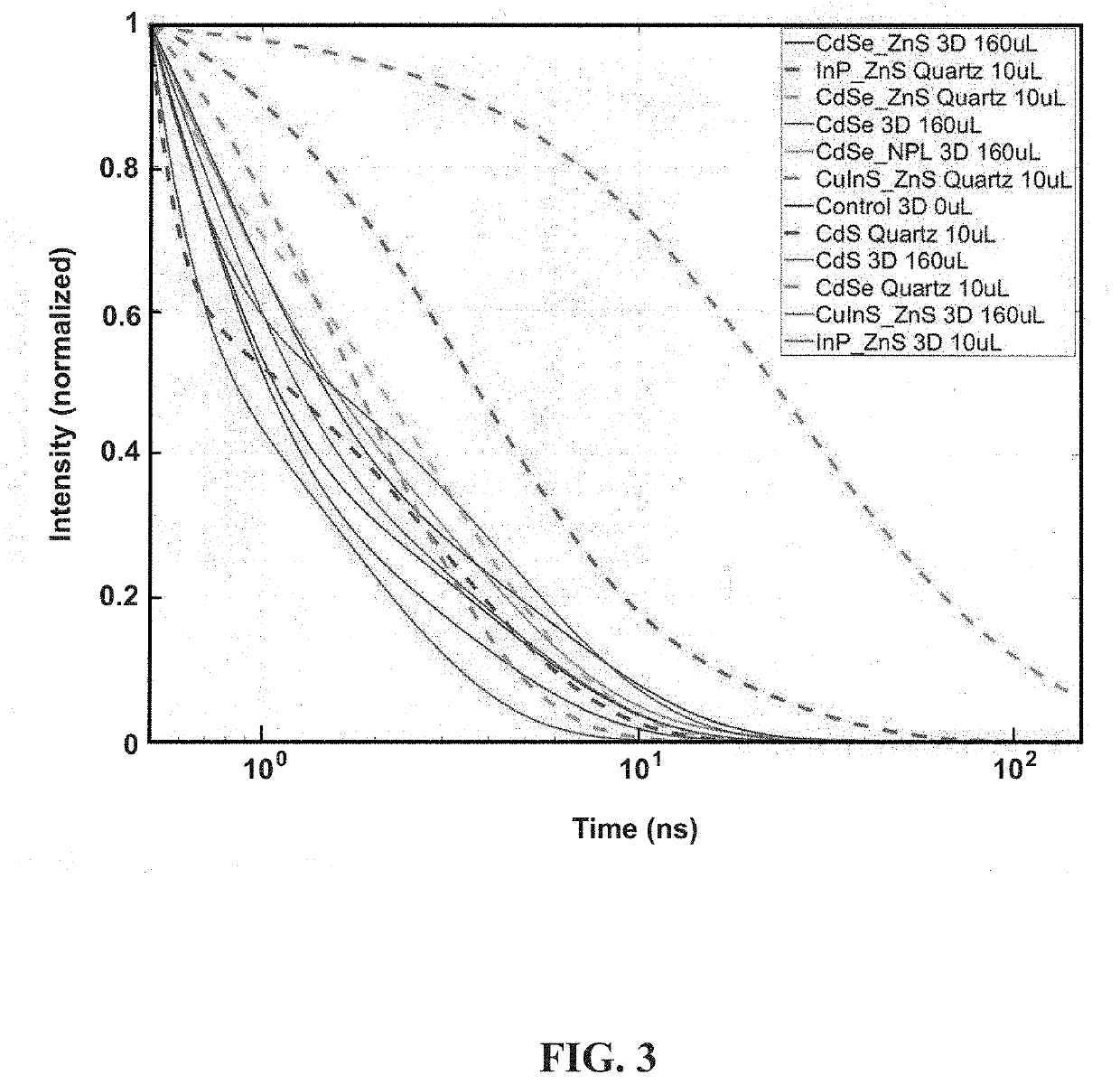Nanocrystals impregnated porous article and method of making and using same
- Summary
- Abstract
- Description
- Claims
- Application Information
AI Technical Summary
Benefits of technology
Problems solved by technology
Method used
Image
Examples
examples
[0134]The following examples illustrate particular properties and advantages of some of the embodiments of the present invention. Furthermore, these are examples of reduction to practice of the present invention and confirmation that the principles described in the present invention are therefore valid but should not be construed as in any way limiting the scope of the invention.
[0135]A MultiJet Printing (MJP) 3D printer was used to print out a porous honeycomb structure at a known thickness. The printed honeycomb structure was left in an oven at 70 degrees Celsius on top of a perforated aluminum sheet for 30 minutes to remove most of the wax support structure. The printed honeycomb structure was then moved around in a glass beaker at 250 degrees Celsius to remove the remaining wax support structure. Upon removal of the printed honeycomb structure from the boiling water, a pressurized nitrogen gas was used to dry out the printed honeycomb structure. The printed honeycomb structure w...
PUM
 Login to View More
Login to View More Abstract
Description
Claims
Application Information
 Login to View More
Login to View More - R&D Engineer
- R&D Manager
- IP Professional
- Industry Leading Data Capabilities
- Powerful AI technology
- Patent DNA Extraction
Browse by: Latest US Patents, China's latest patents, Technical Efficacy Thesaurus, Application Domain, Technology Topic, Popular Technical Reports.
© 2024 PatSnap. All rights reserved.Legal|Privacy policy|Modern Slavery Act Transparency Statement|Sitemap|About US| Contact US: help@patsnap.com










